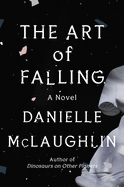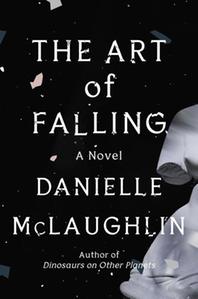
 Little did the characters of Danielle McLaughlin's fiction debut, Dinosaurs on Other Planets, know that they had it relatively easy. That short story collection features numerous characters on the brink of various losses, but it's all over after a few pages. The decorous but deceptively fearsome novel The Art of Falling consolidates the stressors, cycles them through several hundred pages and puts a single character in the crosshairs.
Little did the characters of Danielle McLaughlin's fiction debut, Dinosaurs on Other Planets, know that they had it relatively easy. That short story collection features numerous characters on the brink of various losses, but it's all over after a few pages. The decorous but deceptively fearsome novel The Art of Falling consolidates the stressors, cycles them through several hundred pages and puts a single character in the crosshairs.
As the novel begins, a teacher has summoned Nessa McCormack, who lives in a well-heeled suburb of Cork, to her 16-year-old daughter's school, alleging that Jennifer has been bullying another student--Mandy Wilson, who used to be Jennifer's best friend. Although Nessa recognizes the parental obligation to appear distressed at the prospect of her child's troublemaking, she registers relief at news of the girls' withered friendship: "If Jennifer and Mandy had not been friends, then perhaps Cora Wilson would never have gotten to know Philip and might have confined her affections to her own husband."
Nessa and Philip, an architect, are seeing a marriage counselor to stanch the bleeding caused by his now terminated affair with Cora. Of a lesser, but still acute, concern to Nessa is the debt that Philip has racked up thanks to his atrocious instincts for property investment. Nessa's job at an art gallery is a vital source of both income and pride. She's the project manager for a major acquisition: the studio of the artist Robert Locke, dead nearly 20 years but still an object of some fascination. Everything is going smoothly with the acquisition until Nessa is confronted by a woman who insists that she worked on one of Locke's most celebrated pieces--"If you are the expert that you claim to be, you will know this"--and wants to be credited for her contribution.
The Art of Falling can read like a beleaguered-everymom novel--I Don't Know How She Does It in a more picturesque setting--although McLaughlin isn't playing Nessa's circumstances for laughs. While the book's characters occasionally behave in implausible ways out of what seems like narrative necessity (never mind how she does it; why is she doing it?), McLaughlin's storytelling gifts and dexterous sentences are amply compensatory. At times her plotting verges on masterly, as when she introduces an aspect of Nessa's past that infiltrates her work and family lives with the gentleness of an ice bath. --Nell Beram, author and freelance writer
Shelf Talker: In this blistering first novel, a project manager at an art gallery finds her past sneaking up on her, further complicating her already frazzled work and family lives.

